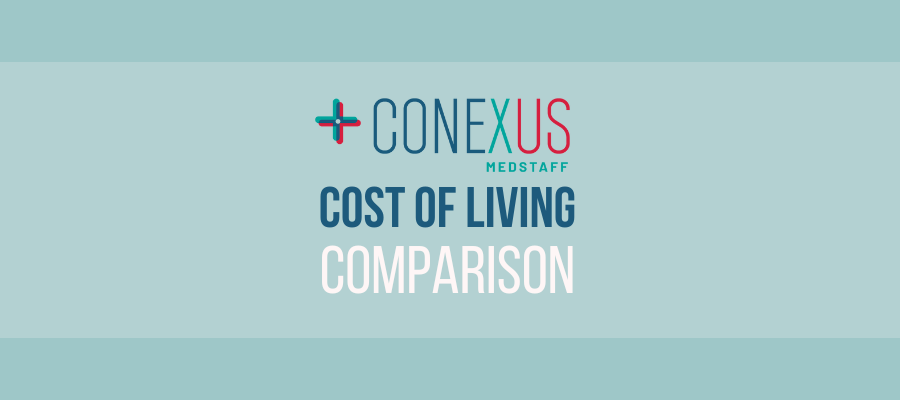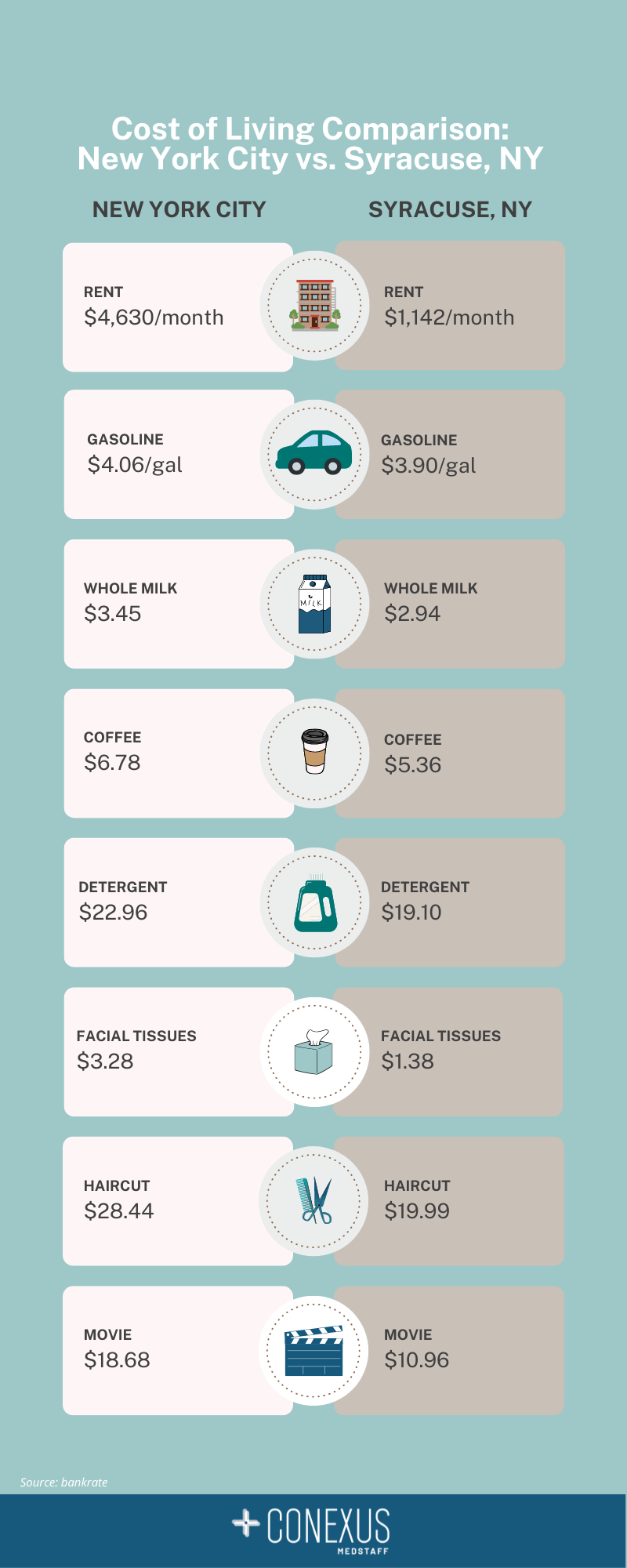Choosing where to work and live in the U.S. is a big decision. We’re here to help guide you through...
Cost of Living Comparison: New York City vs. Syracuse, New York

It's no surprise that many of our healthcare professionals have expressed a desire to live in New York City. With the largest population of any city in the United States at 8.5 million people, New York City is a popular destination for international travelers and U.S. citizens alike. It also consistently ranks as the number one most expensive city in the United States.
Since the cost of living impacts how far you can stretch your dollar, many Conexus healthcare professionals choose to start their U.S. journey in a smaller, more affordable city.
To give you a better understanding of how the cost of living varies, this article will provide a cost comparison between New York City and Syracuse, New York.
New York City and Syracuse, NY
In New York City, an apartment that rents for $4,630 would cost $1,142 in Syracuse. That’s a 75% difference. If you’re planning on purchasing a home rather than renting, a home that sells for $2,486,094 in Manhattan could be owned for $517,746 in Syracuse – a 79% difference.
Below you’ll see some examples of some common expenses and what they cost in each city.

While both cities have much to offer, the cost of living in New York City can be much higher than that of Syracuse. This is particularly true in terms of housing and transportation, both of which can come at a premium in The Big Apple. Clearly, Syracuse is a much more affordable option for healthcare professionals looking to move to the United States, while still being able to enjoy a high quality of life.
Can I afford it?
1. Work out your approximate monthly income (taking tax into consideration). Try not to rely on too much overtime pay – a good work-life balance is important for your well-being!
2. Then, take away any non-negotiable expenses, such as health insurance costs and money put aside for emergency funds or savings.
3. Write down the essentials you’ll need each month. These expenses will form the basis for a monthly budget. Include necessities such as rent, utilities, a cellphone, internet, groceries, and so on. You may want to purchase or hire a car, or you may need to pay for public transport to work and back. Shop around online to determine how much these things may cost in your preferred city. You’ll also want to take into consideration less frequent purchases, such as buying clothes and scrubs, haircuts, leisure activities such as a visit to the movies and so on.
4. Subtract your anticipated monthly costs from the figure in step 2. The amount you’re left with is your expendable income. This is what you can use for savings, to send money back home, for vacations – whatever you like.
You want your expendable income to be as high as possible for the best possible quality of life. If your preferred city of deployment is too expensive, then our experts will be able to suggest alternative locations where the cost of living is lower.
Can I choose where I work when I start my healthcare career in the U.S.?
We collaborate with healthcare organizations across the United States to provide opportunities for international nurses and medical technologists moving to the U.S., as well as nursing graduates on the F1 visa looking for OPT and Green Card sponsorship. Once you start working with Conexus MedStaff, we do everything we can to make sure you’re placed at a location that is a good fit for you.
To do this, we follow a placement process that takes your geographical preferences, career goals, acuity level, and other factors into consideration.
Source: Bankrate

